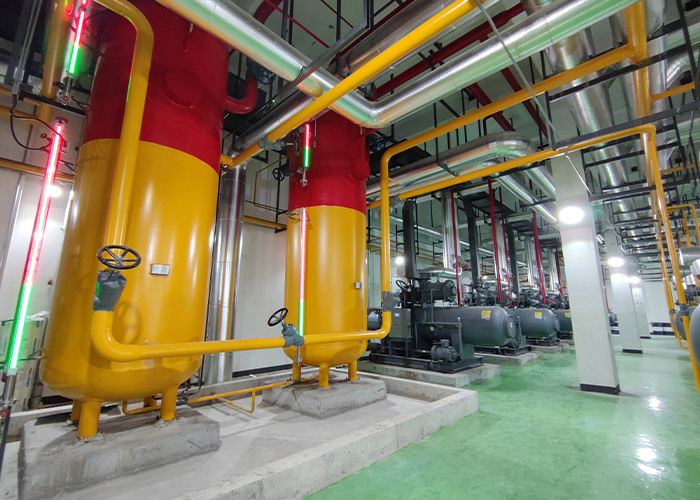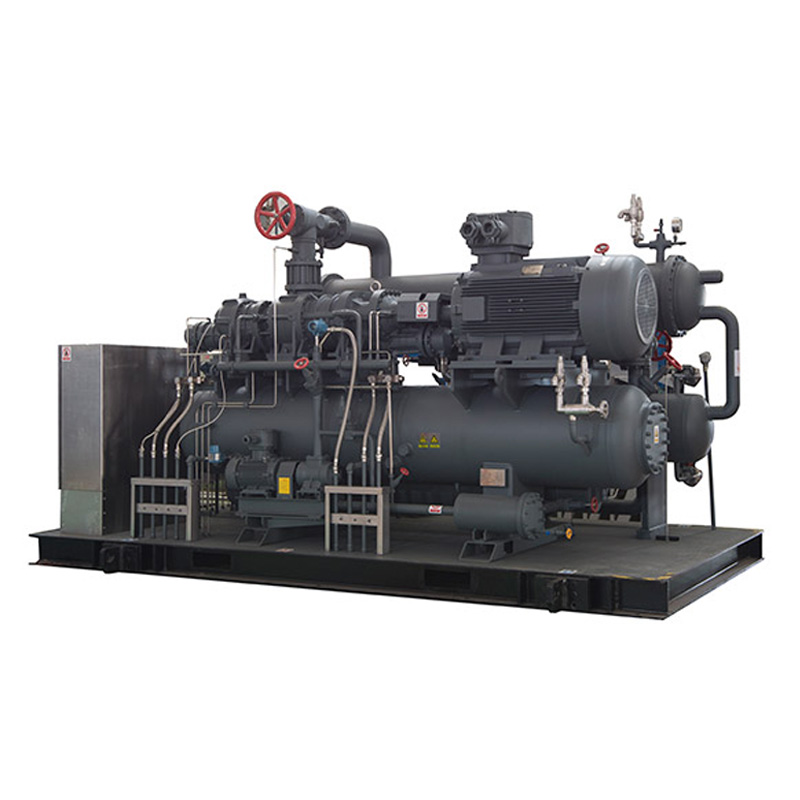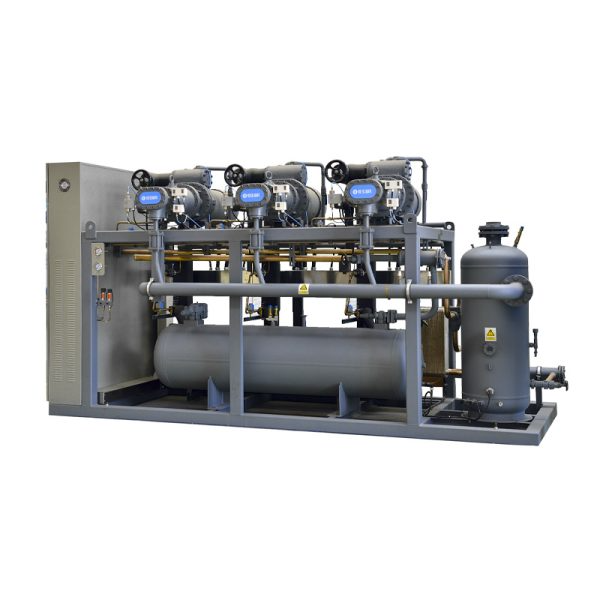As the global refrigeration industry moves toward sustainability and follows rules more closely, natural refrigerants like CO₂ are becoming smart choices instead of man-made ones. Because of its strong heat properties, safety rating, and fit with green goals, CO₂ is now seen as more than just an option. It is viewed as the top choice for the future.
For workers in the industry who want effective, easy-to-grow, and green cooling setups, MOON-TECH provides modern tools that match the CO₂ shift well. Since 1956, MOON-TECH has focused on giving ready-to-use refrigeration answers made for factory and business uses. With its worldwide help network and promise to full project life support, which includes research, setup, and after-care services, MOON-TECH shows up as a trusted helper in your move to earth-friendly refrigeration systems.

Why Is CO2 Refrigerant Gaining Momentum in the Cooling Industry?
As rules for the environment get tougher and businesses work to cut their carbon mark, CO₂ refrigerant has caught notice for its rule-following perks, setup work rate, and safety.
Environmental Sustainability and Regulatory Compliance
CO₂, known in science as R744, has no harm to the ozone layer (ODP = 0). It also has a very small effect on global warming (GWP = 1). Both NH₃ and CO₂ come from nature as work fluids. For NH₃, ODP is 0 and GWP is 0. For CO₂, ODP is 0 and GWP is 1. This gives good care for the environment. So, CO₂ draws interest under world plans to cut down hydrofluorocarbons (HFCs).
Thermodynamic Properties Supporting High Efficiency
CO₂ works well in both transcritical and subcritical cycles. This depends on the air around it. CO₂ moves heat very well. So, the gear design gets smaller. The setup uses less power. And energy use goes up. Its big cooling power per volume lets setups stay small while keeping the work output.
On top of that, CO₂’s high heat-out temperatures make it great for getting back heat. This raises energy use in many ways. Liquid CO₂ passes heat (latent heat) by changing state. It keeps a steady temperature.
Industrial Support and Technological Maturity
The readiness of setups that work with CO₂ keeps growing. From falling film evaporators to speed-change controls, the setup design has changed to help top work rate.
One key step forward is the CO2 High Efficiency Phase Change Refrigerating Unit. It uses R290 and R744 refrigerants. The R290 compressor follows the API 619 standard. This boosts seal work and trust a lot. The unit has an explosion-proof build for better safety.

How Does CO2 Compare to Traditional Refrigerants?
CO₂ gives clear work perks when set against man-made refrigerants like R404A or R507A. This shows up in work rate and green care, especially.
Performance Metrics Across Different Applications
| Refrigerant | Cooling Efficiency (COP) | Pressure Requirements | Energy Consumption | System Complexity | Maintenance Needs |
| R404A | Medium | Low | High | Low | Low |
| R507A | Medium | Low | High | Low | Low |
| NH₃ | High | Medium | Medium | High | High |
| CO₂ | High | High | Low | Medium | Medium |
The COP of the NH₃/CO₂ cascade refrigeration system beats the COP of a single refrigerant dual-stage compression refrigeration system. This holds true in some ranges of work conditions.
Safety Profile and Operational Considerations
Unlike ammonia or HFCs, CO₂ refrigerant is safe. It causes no poison and does not catch fire. These traits make it better for places with lots of people or food work.
Still, CO₂ setups run at high pressures. This can reach up to 130 bar in some transcritical cycles. That is why units like the Semi-Hermetic Screw Refrigeration Compressor Unit are made just for CO₂ uses. The semi-hermetic compressor build has fewer parts that wear. So, it stays reliable in tough spots.

Lifecycle Cost Analysis for Industrial Use Cases
- Lower power bills from better setup work rate.
- No fees for HFC green harm.
- Longer gear life because no rust happens.
- Less power for pumps than salt-water based setups.
- Better return on money through heat get-back links.
What Are the Engineering Challenges of Using CO2?
Even with its many good points, adding CO₂ to factory setups brings design and work issues. These need steady fixes.
Managing High Operating Pressures in System Design
CO₂’s high pressure calls for strong builds and solid materials. The special air cooler for CO₂ system uses unique cut tech. It gets pressure-checked for top strength to keep full safety. Fix plans like ejectors, economizers, and cascade setups can spread pressure loads well.
Setups like the Semi-Hermetic Screw Refrigeration Compressor Unit give easy size changes. This comes from multi-compressor side-by-side builds. So, they fit high-pressure spots well.
Efficiency Optimization Under Varying Ambient Conditions
To keep work rate in summer or hot areas like tropics, transcritical setups must change. They skip old condensers and use gas coolers instead. Plus, linking with phase change tech boosts steady work.
Training and System Familiarity Among Technicians
Workers need to know the special heat ways of CO₂ setups. MOON-TECH gives skill training for buyers. This helps them handle gear run and care well. So, it keeps trust over time.
How Does MOON‑TECH Support the Transition to Natural Refrigeration?
MOON-TECH brings the base, goods, and know-how for good CO₂ setup use. This covers from plan to start-up.
Product Portfolio Tailored for CO2 Applications
Setups like the CO2 High Efficiency Phase Change Refrigerating Unit are built for today’s factory needs. This good fixes main problems. For example, it stops metal rust from salt-water secondary fluids. It cuts big heat swap temp gaps. And it lowers power for flow pumps.
Engineering Expertise and Custom Solutions
From early plans to start-up, MOON-TECH gives full custom refrigeration and heating answers. These fit the special wants of many business types. Their own research team makes sure buyers get the best setups for their work.
Global Service Network and After-Sales Support
With work in more than 120 countries and regions, MOON-TECH’s world network gives local help. Their services cover far-off checks for fast problem finds. They also offer care plans to stop issues. And they do on-site skill lessons for workers.
What Are the Economic Benefits of Adopting CO2 Refrigeration?
Moving to CO₂ is not just good for the earth. It makes money sense when you look at a gear’s full life.
Energy Savings Through System Efficiency Gains
High COP numbers mean less power used for each bit of cooling. The full work rate of the refrigeration system saves 20-25% power in CO₂-based setups.
Lower Environmental Compliance Costs
Natural fluids like CO₂ skip carbon fees on man-made HFCs. This cuts costs over time. At the same time, it fits your business with coming green rules.
Competitive Advantage Through Innovation Adoption
Firms that take green cooling answers cut stop times. They also lift their company look. Setups from MOON-TECH let quick big-scale start. This helps you lead in field changes.
FAQ
Q1: Is using CO₂ safe in food processing environments?
A: Yes. CO₂ refrigerant is safe. It has no poison and does not burn. It gets used a lot in storage spots, work areas, making zones, and other busy places.
Q2: How does a phase change unit enhance energy efficiency?
A: Liquid CO₂ moves heat (latent heat) by state change. It holds a steady temperature. This lets exact temp watch with less pump power use.
Q3: Are specialized components required for CO₂ systems?
A: Yes. High run pressures mean parts must handle pressure and fight rust. Gear like semi-hermetic compressors fits these needs.

